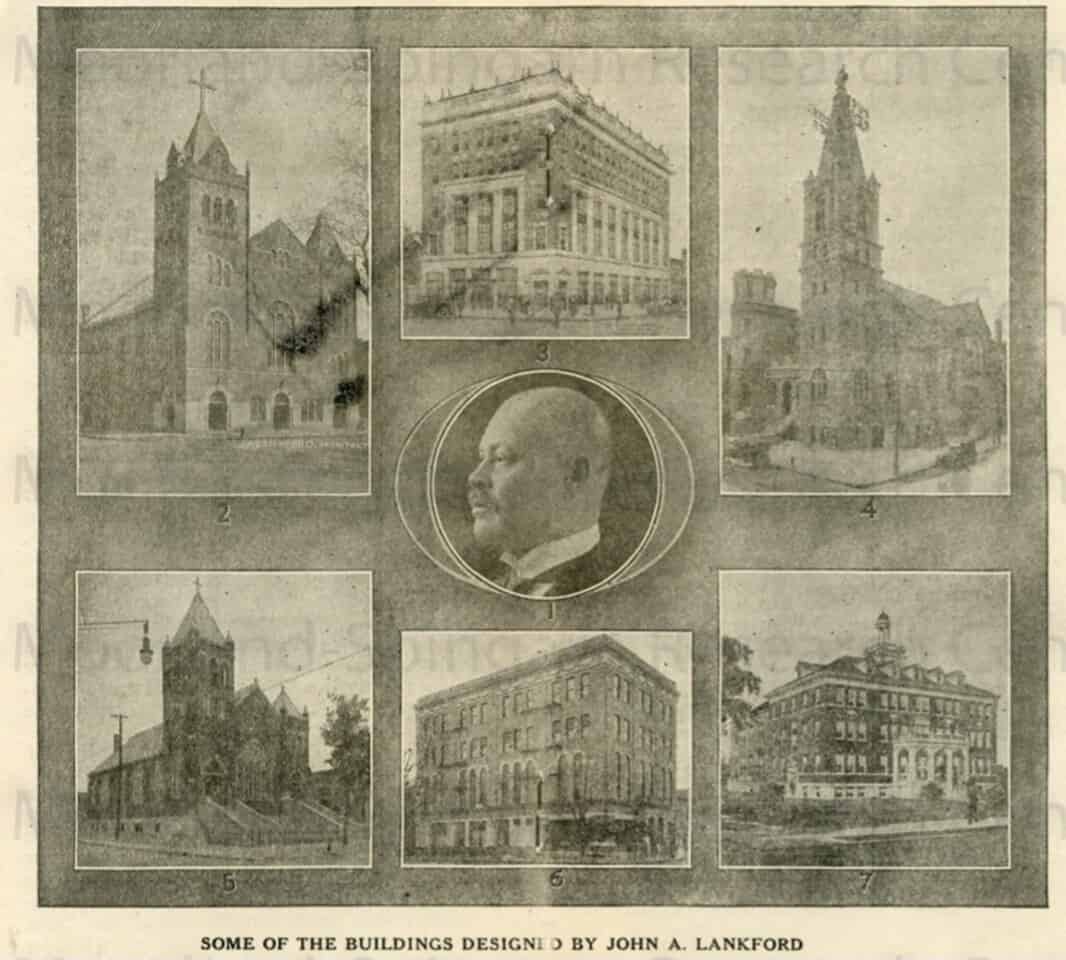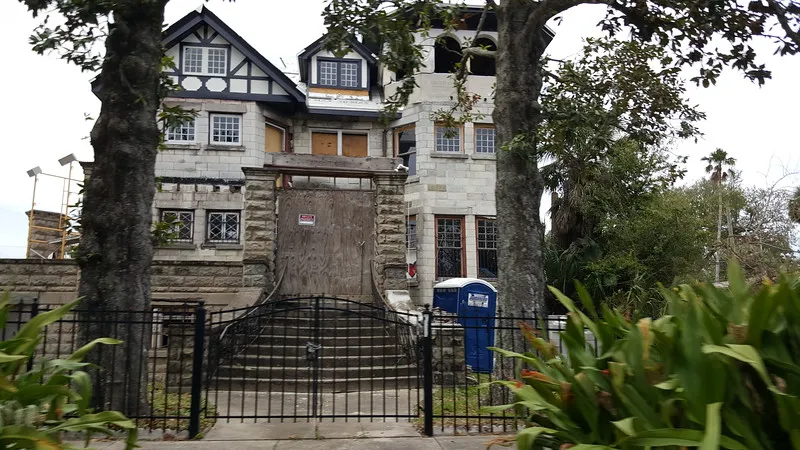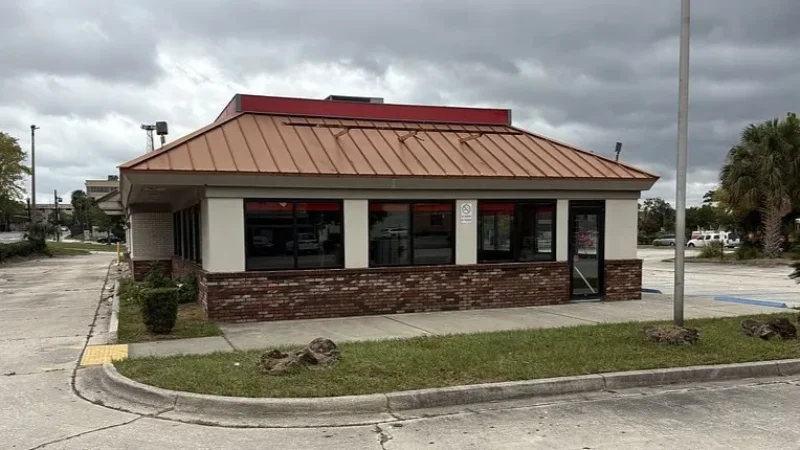
Regarded as the “dean of Black architecture,” John Anderson Lankford was a nationally known early 20th century architect with significant ties to Jacksonville. Virtually unknown to modern day Jaxsons, Lankford was the first professionally licensed African American architect in Virginia and the District of Columbia.
During his career, he specialized in church, fraternal, and school designs along with residential commissions in Black communities throughout the country and South Africa. Notable buildings designed and constructed under Lankford’s supervision include Atlanta’s Big Bethel African Methodist Episcopal (A.M.E.) Church, Washington, D.C.’s True Reformers Hall and Deland’s Bethel A.M.E. Church.
Born in Patosi, Missouri, in 1874, Lankford attended and graduated Lincoln Institute (presently Lincoln University) and Tuskegee University after personally receiving an invitation from Booker T. Washington to enroll. By 1901, Lankford had become a highly respected architect up and down the East Coast.
In 1902, he married the granddaughter of Bishop Henry McNeal Turner of the A.M.E. Church and relocated to Washington, D.C., where he established an architectural office. While gaining a reputation for designing fashionable homes for prominent professionals at the time, he believed that Blacks should build their own churches rather than purchase old buildings vacated by Whites. With the support of Bishop Turner, Lankford was elected as the official Church Architect and Supervisor of A.M.E. buildings in 1908.
As the official architect for the national A.M.E. church, Lankford resided in Jacksonville between 1912 and 1916, serving as an architect and professor at Edwards Waters College (now Edward Waters University). Established in 1866, Edward Waters University was started by Bishop Charles H. Pearce to educate formerly enslaved, with a focus on those desiring to enter A.M.E. church ministry. Lankford eventually left his role with the A.M.E. and returned to the private sector. After a lengthy illness, John Anderson Lankford passed in Washington, D.C., on July 2, 1946.
During his time in Jacksonville, Lankford was credited as being the supervising architect for several large commissions. While many have been demolished over the decades, here are a few surviving buildings tied to Lankford’s time in Jacksonville:
Centennial Hall

Centennial Hall is the oldest surviving building on the campus of what is now Edward Waters University. Built in 1916, it was added to the U.S. National Register of Historic Places on May 4, 1976. Now the college library, this structure was designed by Richard Lewis Brown (1854-1948), Jacksonville’s first-known Black architect. While Brown has long been associated with this structure locally, Lankford was living in Jacksonville and employed as the architect for the A.M.E. denomination at Edward Waters College in 1916. It is likely, these men worked together on the design and construction of this building, along with a firm based out of Seattle, Washington.
Susie Tolbert House

Born in Chicago, Susie Ella Middleton Tolbert moved to Jacksonville following the Great Fire of 1901. A mother of seven, Tolbert taught music and applied social etiquette at Edwards Waters College. She also supported needy students by providing free room and board and lobbying for better facilities and equipment for Black children in town.
In addition, Tolbert developed the Willing Workers Club and the Christian Endeavor Organization for her church, New Bethel AME. Her Garden Club focused on beautifying Black neighborhoods throughout the city. In 1951, nine years after her passing, school officials changed the name of College Park Elementary School to Susie E. Tolbert Elementary School in her honor. Restored in 2012, her former residence is now the Office of Institutional Advancement on the campus of Edward Waters University.
Lankford originally designed and built this residence as a parsonage for Edward Waters.
Masonic Temple

Completed in 1916, the Masonic Temple has served as the focal point for Jacksonville’s Black community’s commercial and fraternal activities for decades. Anchoring LaVilla’s Broad Street, the six-story building designed and constructed under the supervision of John Anderson Lankford. Acting as gofers for Lankford and the Black Masons of Florida, architects Victor E. Mark and Leeroy Sheftall helped produce a building design characterized as a mix of “Prairie” and “Chicago” School architectural styles. Then valued at $102,000, the mixed-use building featured retail at street level, office space on the second and third floors, with the top floors being occupied by the Grand Lodge.
Described as one of the finest buildings in the world owned by the Black community, throughout Jacksonville’s history, the Masonic Temple was instrumental in the development of the local Black middle-class community, Civil Rights and the Chitlin Circuit. Still owned and operated by The Most Worshipful Union Grand Lodge, Most Ancient and Honorable Fraternity, Free and Accepted Masons, Prince Hall Affiliation, Florida and Belize, Central America Jurisdiction, Incorporated, the building was designated to the National Register of Historic Places in 1980.
Contact Ennis at edavis@moderncities.com







